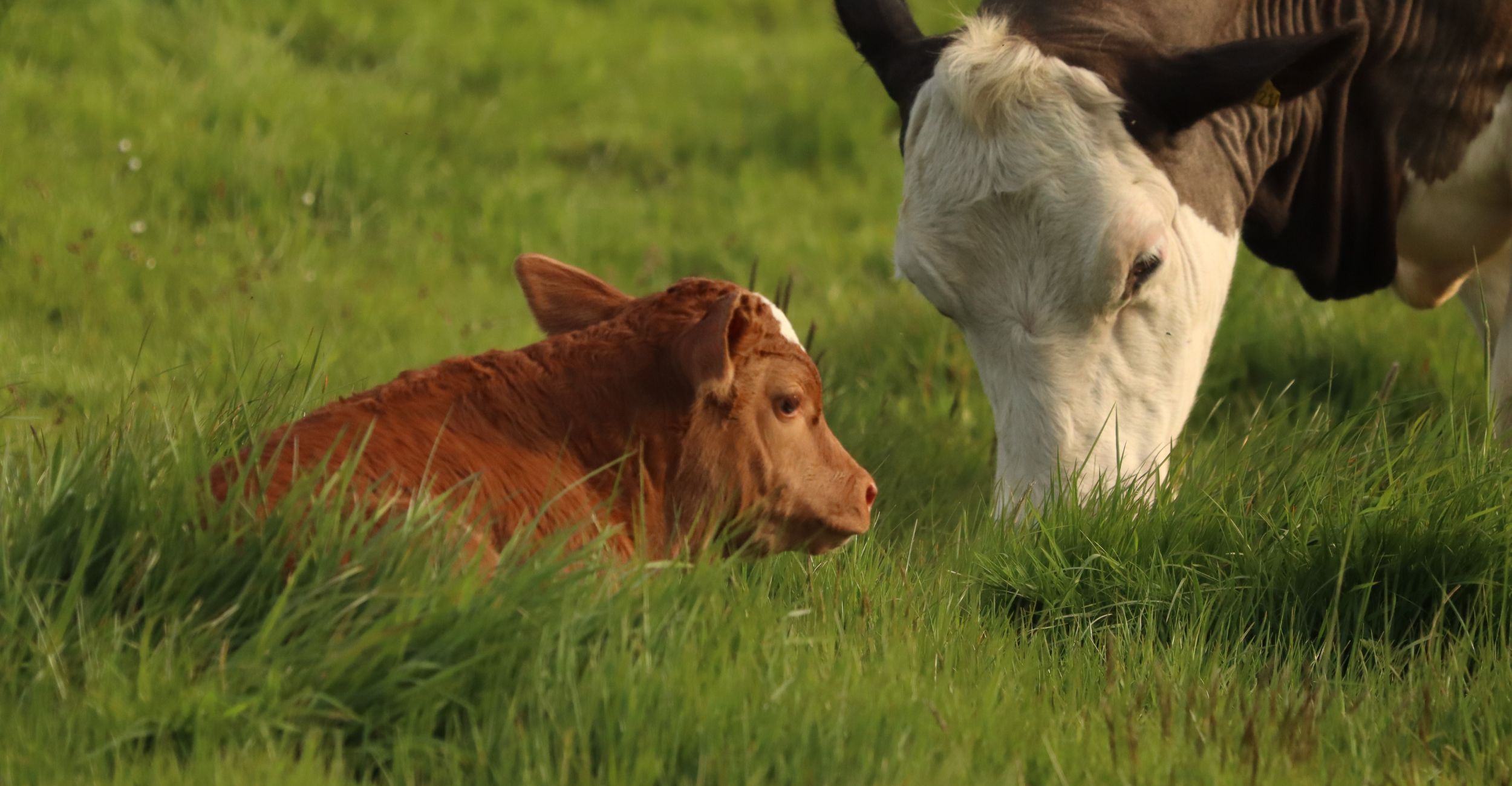
Veterinary Viewpoints: Colostrum – Liquid Gold for Newborn Calves
Friday, March 1, 2024
Media Contact: Kinsey Reed | Communications Specialist | 405-744-6740 | kinsey.reed@okstate.edu
In utero, calves do not receive immunoglobulins (Ig = antibodies) from the dam, instead, they rely solely on passive transfer of antibodies through colostrum intake shortly after birth to acquire immunity. The quantity, quality and timing of colostrum intake are all essential factors in ensuring the calf receives nutrition as well as optimal protection against common diseases during the early stages of life. Here is why each aspect is important:
- Quantity: The general recommendation is for a calf to receive approximately 10% of its body weight in colostrum within the first few hours after birth. For example, a 70 pound calf would require seven pints of colostrum; an 80 pound calf would require eight pints, and so forth.
- Quality: Colostrum quality refers to its concentration of Ig, essential nutrients and overall cleanliness. The concentration of Ig in colostrum varies widely from one cow to the next. We can't tell by looking at colostrum how much Ig it contains. As such, measuring Ig concentration in colostrum can be very useful in managing colostrum quality and monitoring colostrum feeding practices. Those containing 50 milligrams per milliliter or more of Ig are considered high-quality colostrum for newborn calves. Most calves need to receive 150 to 200 grams of Ig to achieve successful transfer of passive immunity. There are few different field tools we can use to measure colostrum quality. One of them is a colostrometer. A colostrometer is a hydrometer that uses the correlation between colostrum density and Ig concentration to give us a measure of colostrum quality. Some models have a color-coordinated scale with green being high-quality colostrum and red being a poor-quality colostrum.
- Timing: The timing of colostrum intake is critical because the calf’s ability to absorb Ig from colostrum decreases rapidly after birth. The intestinal absorption of Ig is most efficient during the first six hours after birth and significantly declines within the first 24 hours. Calves should receive colostrum within the first six to 12 hours of birth to maximize the absorption of Ig and obtain optimal passive immunity.
Storing excess high-quality colostrum for later feeding to newborn calves is a common practice on dairy farms. It provides insurance in case a dam is unable to produce an adequate quantity of good quality colostrum due to mastitis, death or various other causes. The following stored colostrum guidelines can be potentially instituted in cow-calf operations on an as-needed basis. For colostrum held for later feeding, it is recommended to chill it to at least 60 degrees Fahrenheit within 30 minutes of collection. An ice water bath will work well for this. When refrigerating the chilled colostrum, be sure to store it in clean, sanitized containers, such as clean nursing bottles. Fresh colostrum can be stored in the refrigerator for ideally one to no more than three days. Colostrum not used after three days should be discarded. When freezing the chilled colostrum, it is best to use freezer-weight self-sealing plastic bags. Simply fill the gallon-size bags with just one quart of colostrum. Then, lay the bags flat in the freezer so they are thin and thaw quickly. Colostrum can be stored in the freezer for ideally six months , but no longer than one year. Warm water should be used to thaw frozen colostrum bags. Thawing colostrum in microwaves will destroy the Ig present.
In cases where the dam's colostrum quality or quantity is insufficient and there is no frozen colostrum available, colostrum replacers or supplements may be used under veterinary guidance to provide the necessary antibodies and nutrients to the calf. A colostrum supplement is typically less expensive, does not contain nutrients and has less than 50 g of Ig per dose. It is meant to be used as supplementation to colostrum the calf is already receiving from the dam. A colostrum replacer is typically more expensive, contains nutrients such as protein, energy, vitamins and minerals, and includes ~ 100 Ig per dose. A colostrum replacer should be used when no colostrum is available for a newborn calf.
Overall, proper colostrum management, including ensuring an adequate supply of high-quality colostrum and timely feeding, is essential for calf health and survival. Please consult with your veterinarian for assistance with colostrum management on your farm and recommendations for colostrum replacer products to have on hand.
About the author: Dr. Melanie Boileau is an Associate Professor. Originally from Québec, Canada, she received her DVM from Montreal University in 2000. Following her internship in Food Animal Medicine & Surgery, she completed a residency in Large Animal Internal Medicine with emphasis in Food Animal and received a MS degree in Veterinary Biomedical Sciences, both at Oklahoma State University.
Veterinary Viewpoints is provided by the faculty of the OSU Veterinary Medical Teaching Hospital. Certified by the American Animal Hospital Association, the hospital is open to the public providing routine and specialized care for all species, as well as emergency care. Call 405-744-7000 for an appointment or see more information at vetmed.okstate.edu.
